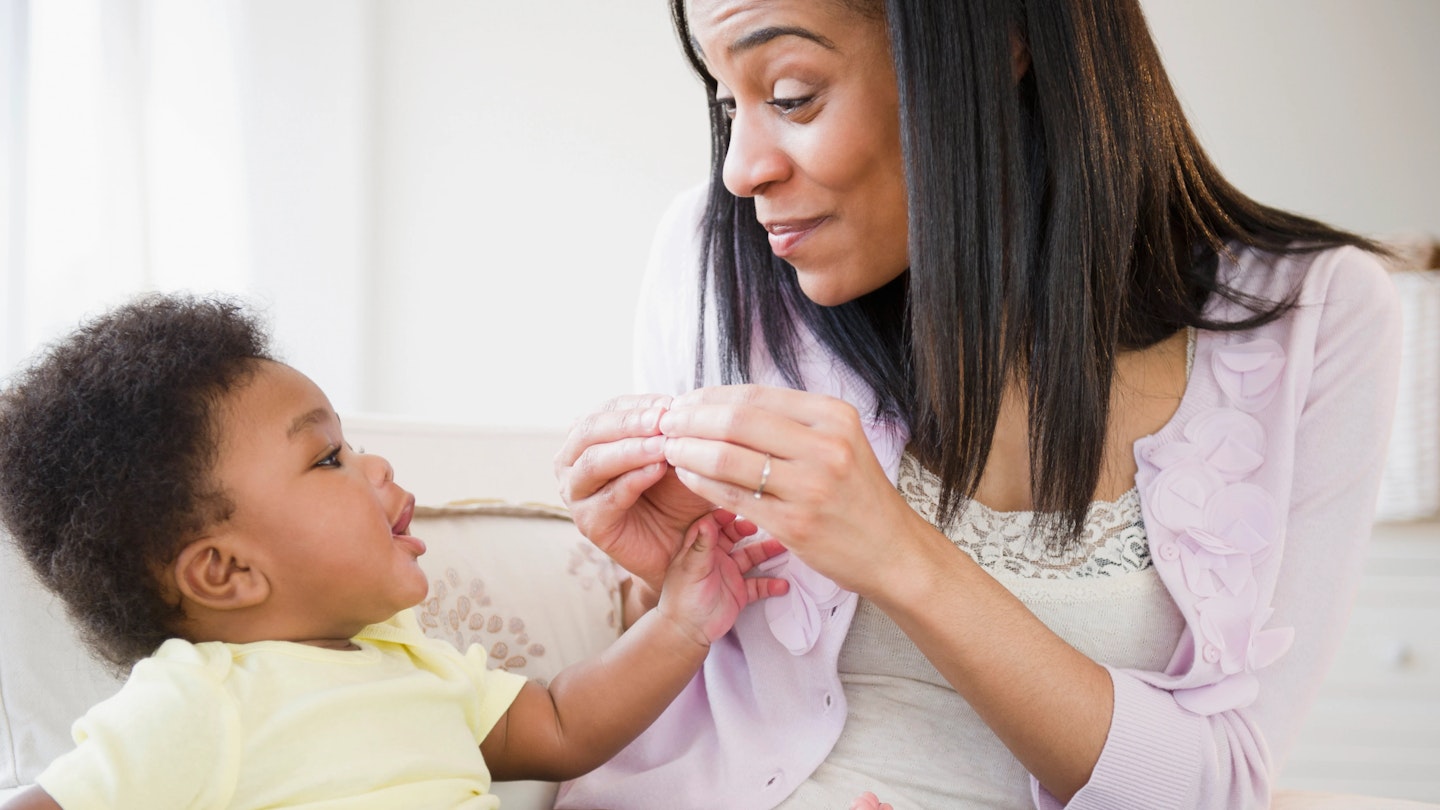As your little one starts to rapidly make their way through all those exciting baby milestones and begins to try and talk, you'll probably find that the two of you regularly use gestures and hand signals to help the two of you to communicate easier. So it's understandable why some parents choose to teach their tots sign language, inspired by British Sign Language (BSL) or American Sign Language, so they're learning a valuable skill while improving their early communication skills.
What is baby sign language?
Baby sign language has proved hugely popular over the last few decades and while it's different from sign language for babies which families with hearing impairments use, this set of helpful gestures helps your baby communicate with you before they're able to talk and can even be a brilliant tool for reducing your tot’s tantrums!
Most babies can be taught how to use their hands to communicate before they can learn how to start talking as they naturally like to copy actions and movements from the people around them, especially their caregivers. Learning to then interpret these actions and movements means they can then use gestures to communicate when they are unable to verbally do so.
Teaching baby sign language is completely optional but it can be a useful tool for parents who would like to try communicating with their babies while they are too young to speak.
Is baby sign language the same as BSL?
While it's understandable how the two can get confused, British Sign Language (BSL) is the sign language used by people in the UK by people with hearing impairments. While there may be similarities between some gestures, the signs are generally different. Some parents, especially those with hearing impairments themselves, do decide to teach and bring their baby up with BSL.
When to teach baby sign language
Although every baby is different, most start to understand common words such as 'drink' or 'daddy' by around 6 months old. Babies won't pick up baby sign language immediately though so if you do start teaching them around 6-7 months old, they may not actually start using them until the 8-month-old mark.
How to teach baby sign language
• Watch a few YouTube videos before your first class to familiarise yourself with basic signs.
• Find a class that fits into your baby’s routine, when they're the most responsive and not tired or hungry.
• Encourage other children and adults who have regular contact with your baby to use the signs too. This will help your little one learn quicker.
• It’s important to speak at the same time as showing the sign, using lots of facial expressions and body language.
• You can sign to your baby from birth, but they'll only sign back around six months. Begin with basic signs, such as for milk and a favourite toy.
10 simple baby signs to learn
To help you get started with some everyday words, here are 10 simple signs to learn so that you can teach your baby sign language with confidence.
More
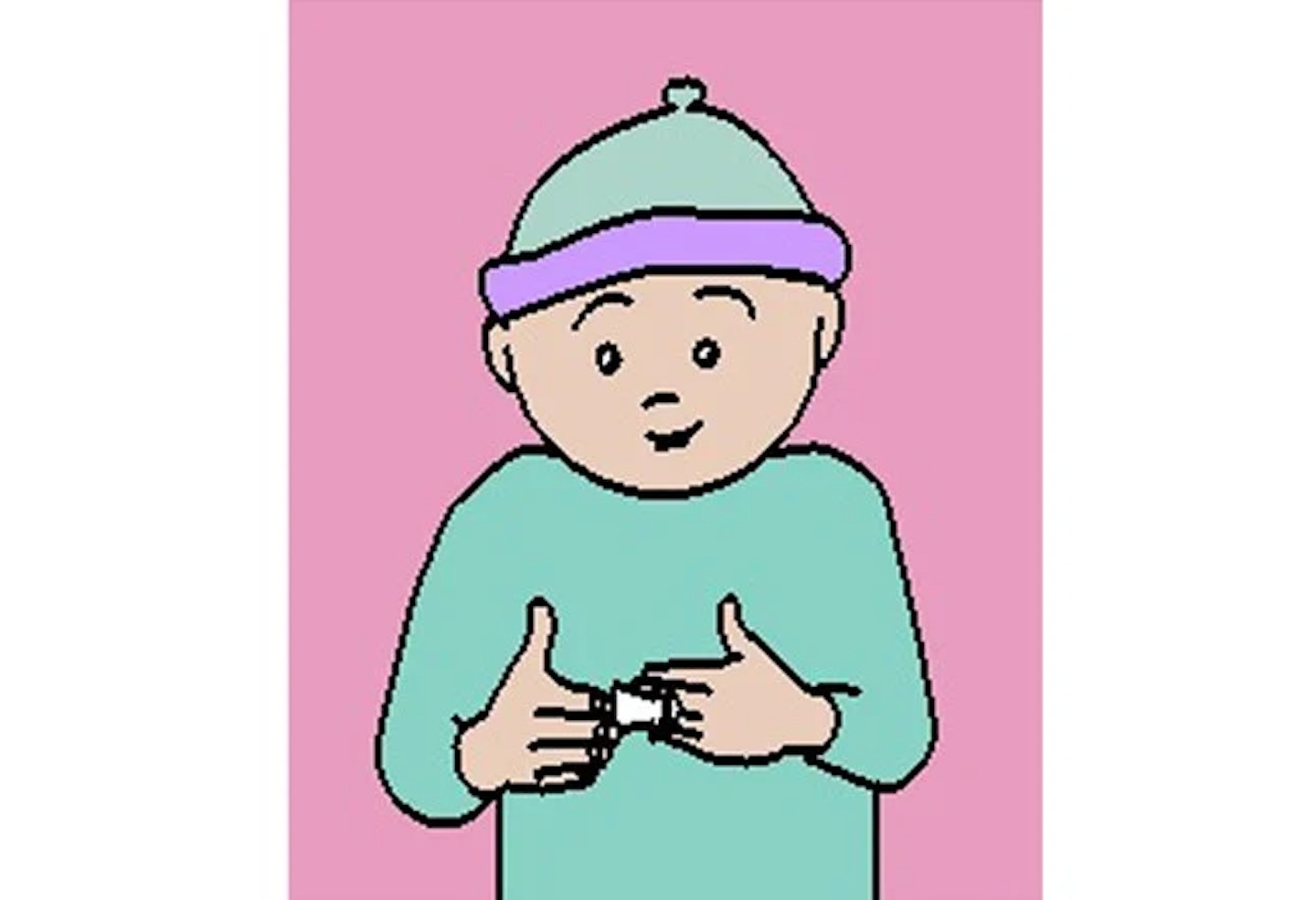
We all like seconds at dinnertime – even your baby. Place your fingertips together and lightly tap your right and left fingertips together twice.
Milk
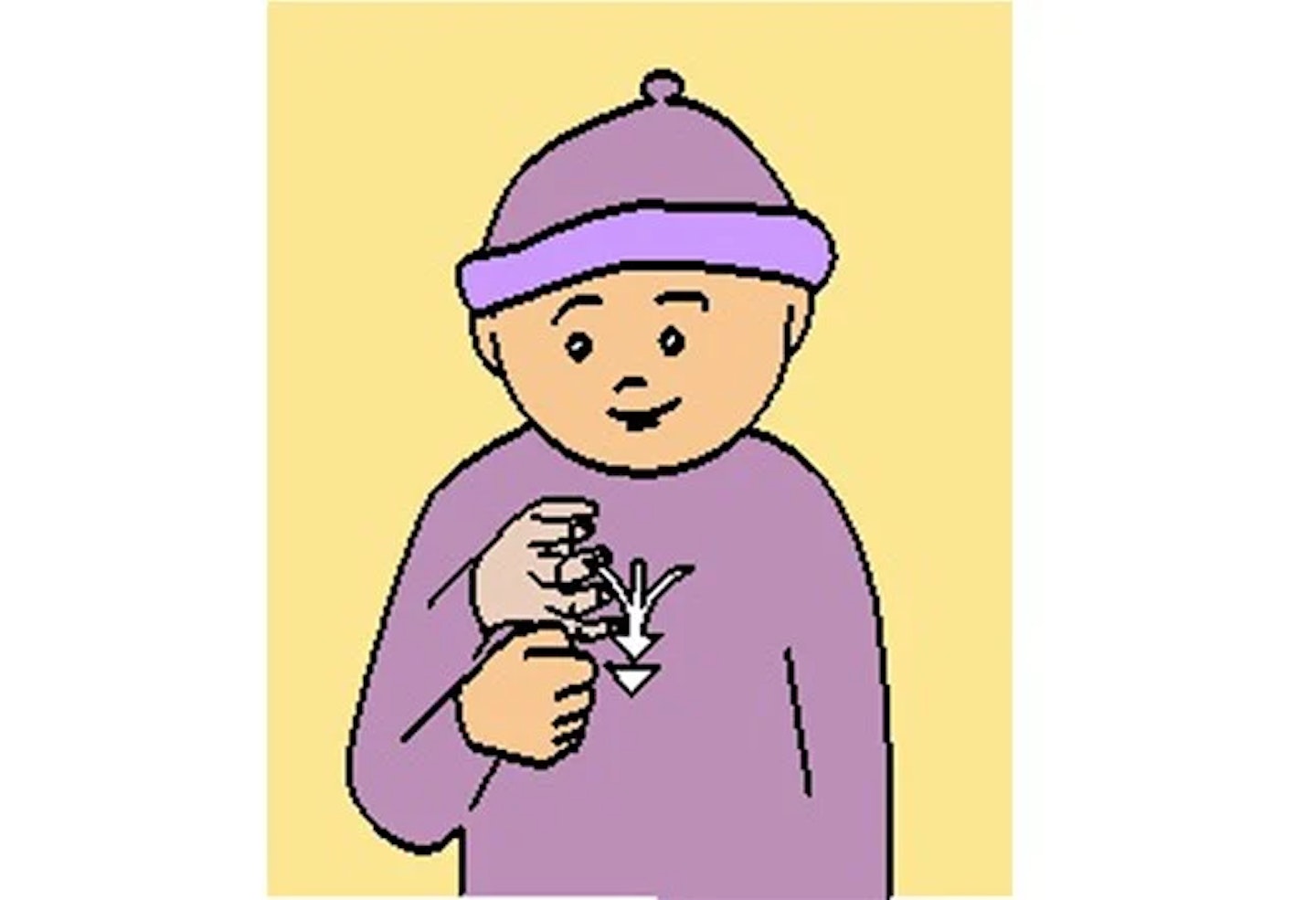
This simple action will help your little one let you know when they want some milk – without all the wailing. With one hand, pretend you're squeezing something in your fist with two pumps.
All gone
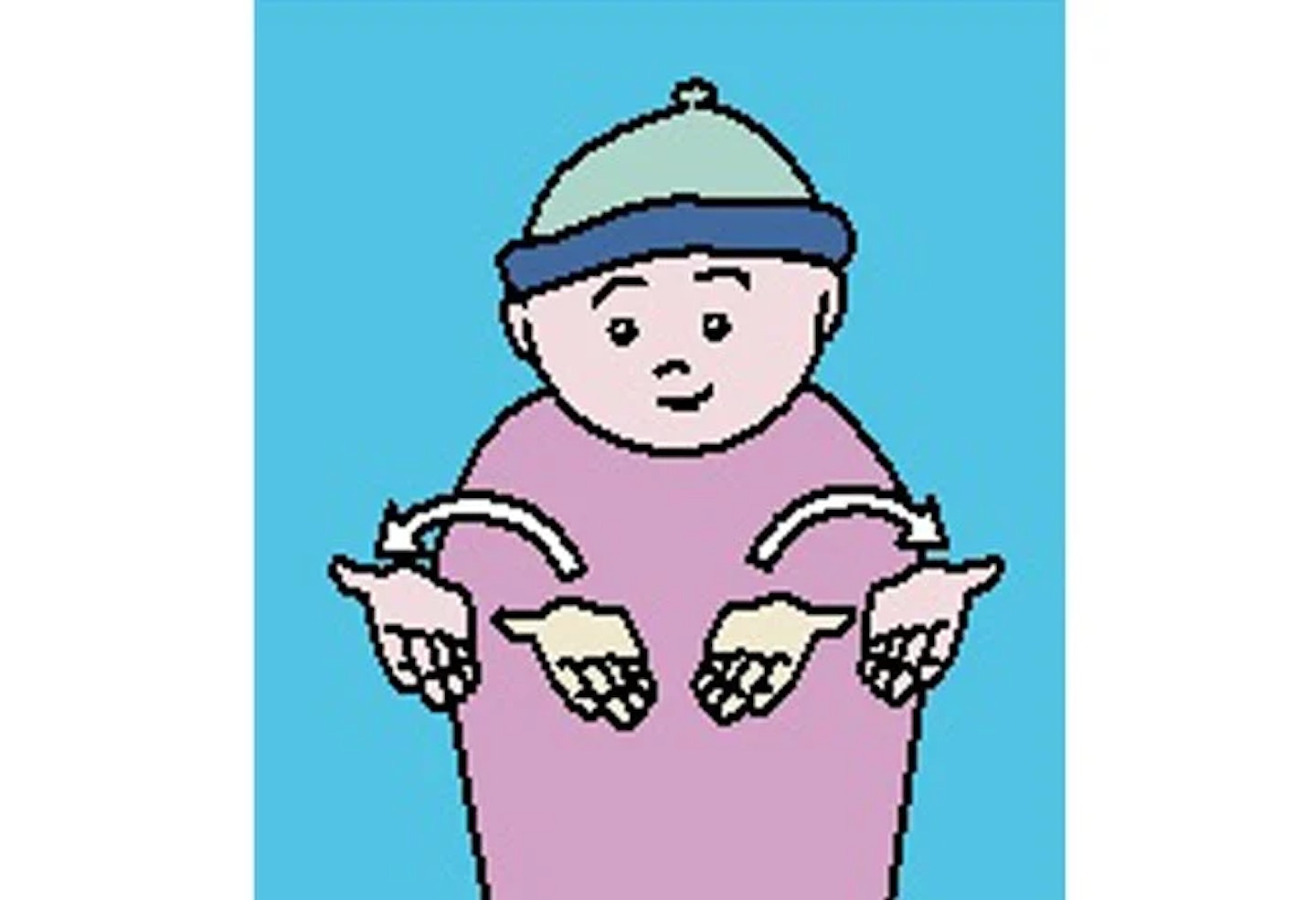
Use this sign to let your baby know that their food is all gone. Simply spread both hands apart and create a U-shaped flick outwards with both hands flat.
Again

You’re obviously a brilliant storyteller if your baby uses this sign once you’ve finished that favourite fairytale. Use two fingers on either one or both hands and shake a few times from the wrist.
Eat/Food
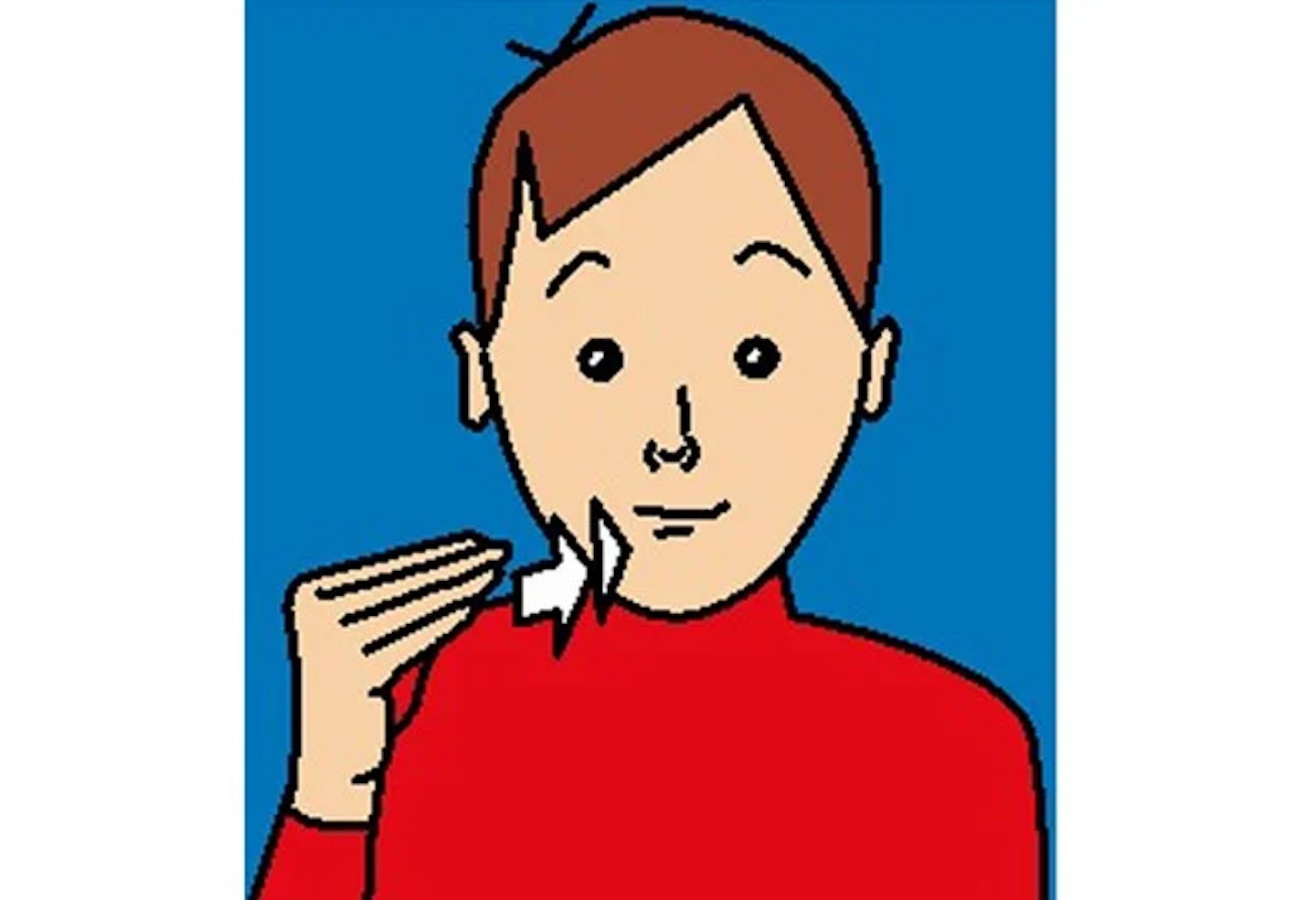
Arguably the most useful sign for weaning babies, this gesture will let your baby explain that they're hungry. Place your fingertips together on one hand and take your hand to your mouth - almost like you're eating pretend food.
Drink
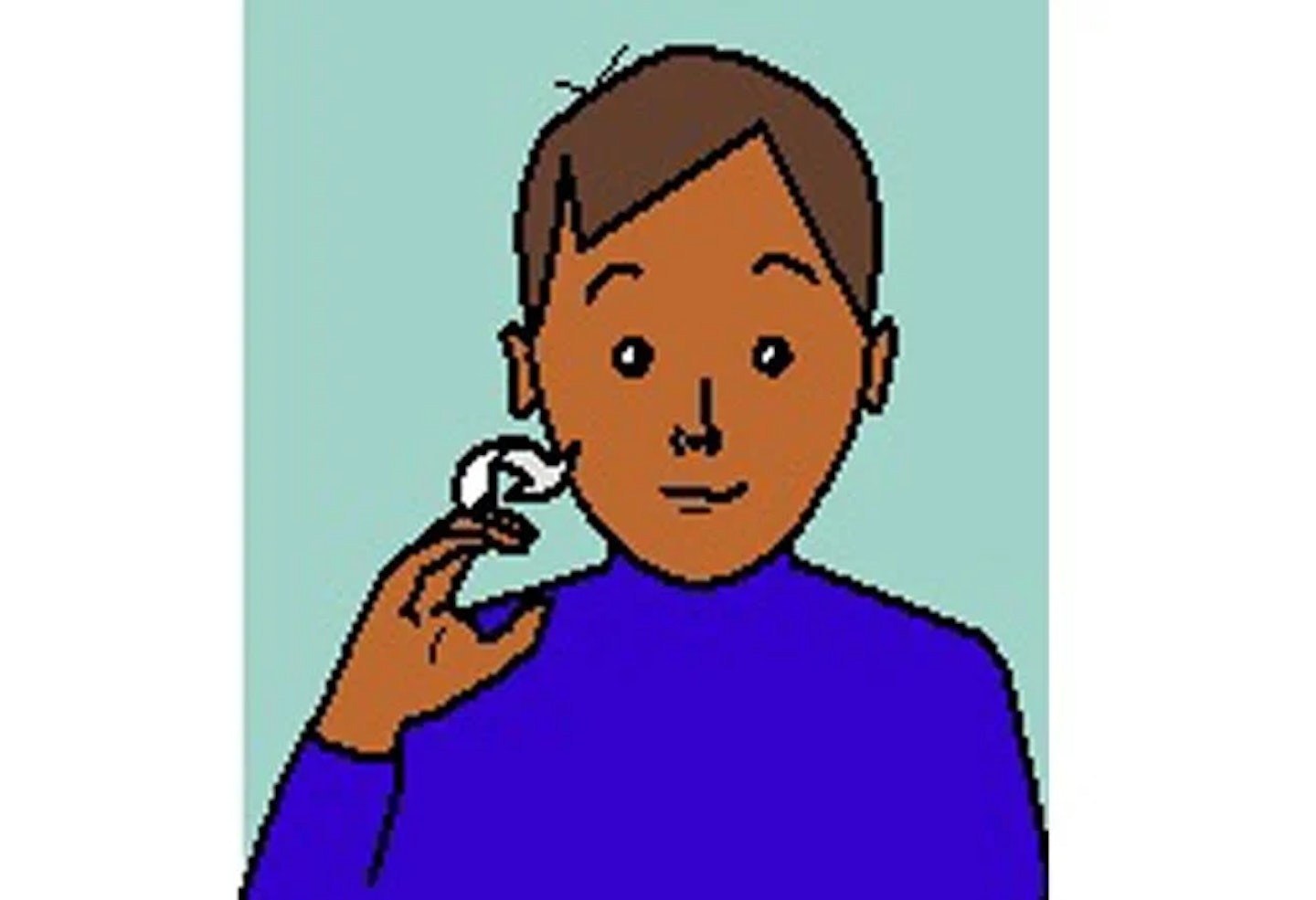
This gesture literally mimes the action of drinking. Simple to understand – even for even those who don’t know any sign language. Perhaps the most obvious, simply pretend to drink from a cup with one hand.
Mummy
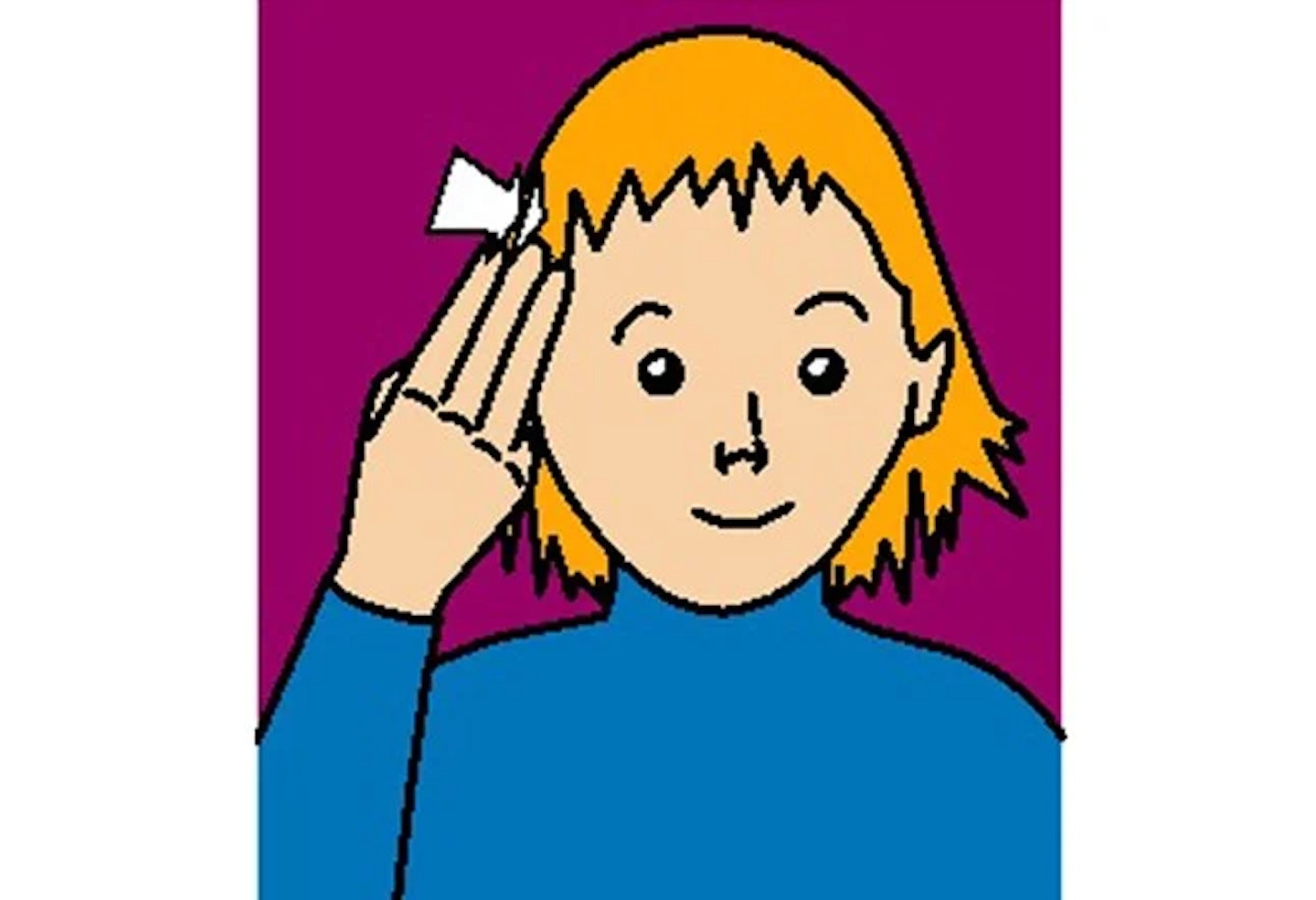
This sign will help your baby communicate that it’s Mummy they want. With one hand, spread your fingers apart with all five fingers up then touch your chin with your thumb.
Cuddle
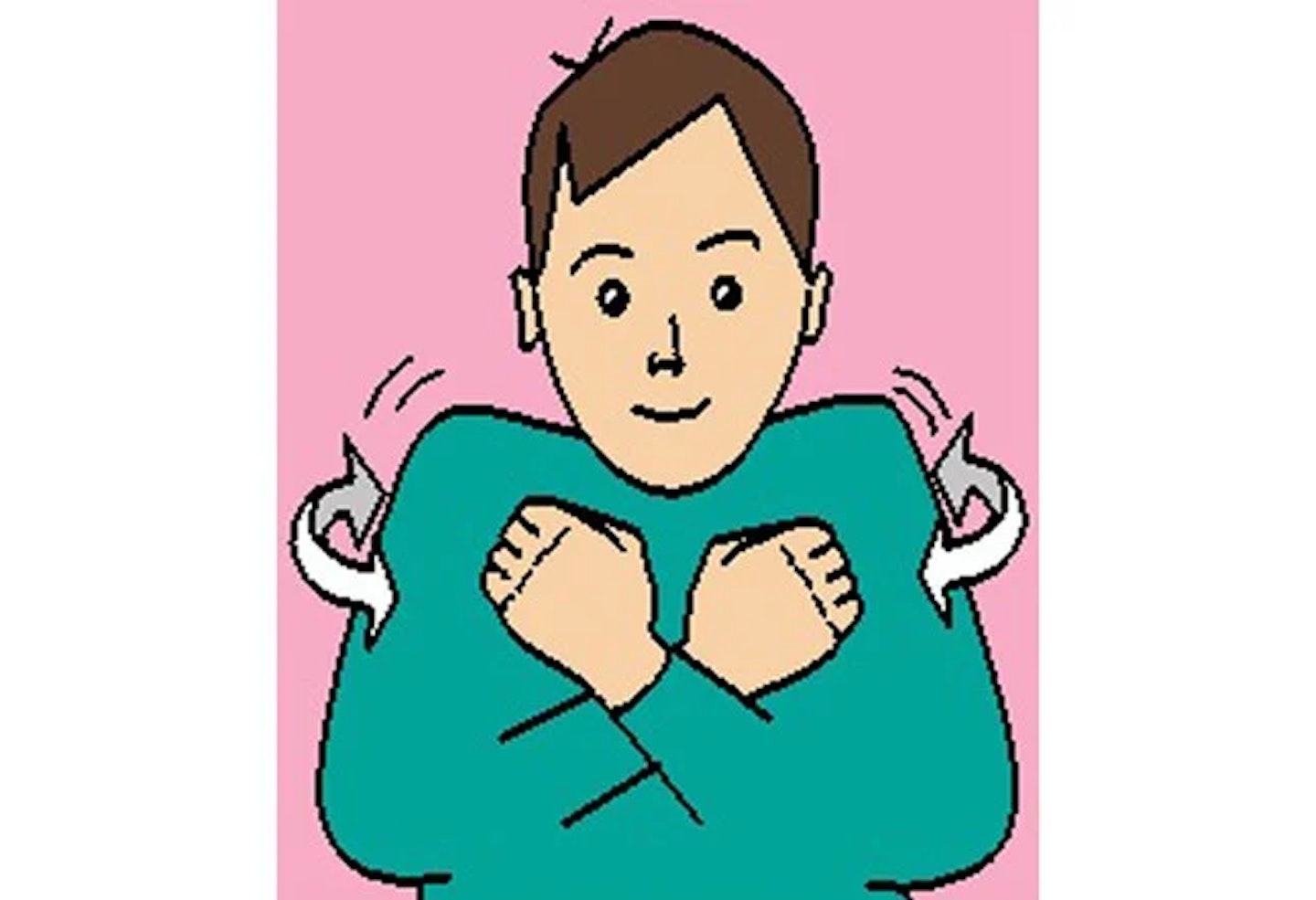
Know when your baby is longing for a cuddle with this simple sign. Cross your arms over for this one and pretend you're giving yourself a little hug.
Daddy
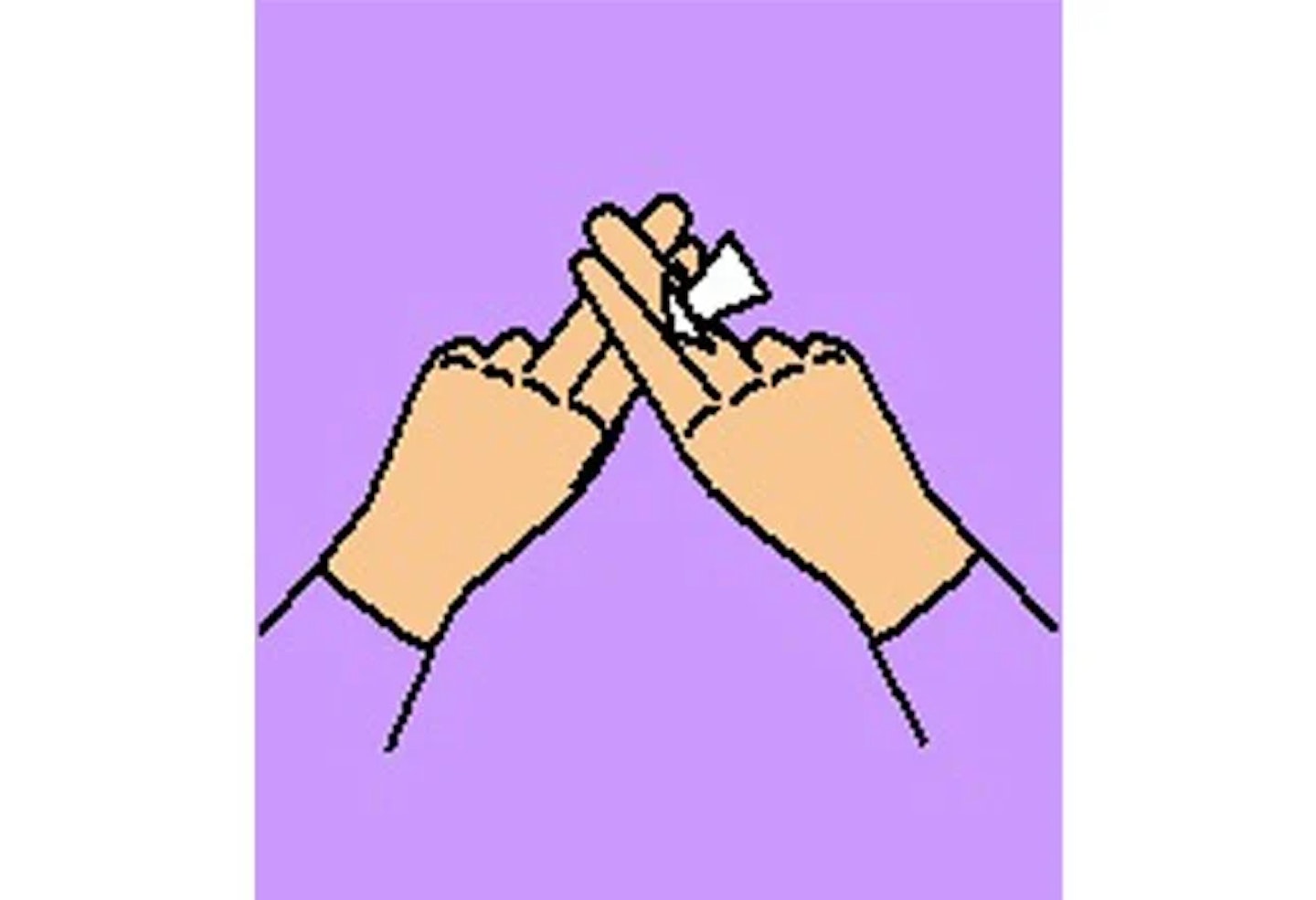
Your baby can use this sign if they want their daddy. Place your index finger and middle finger on both hands together, placing your right fingers over your left then simply brush your right fingers over the end of your left
Nappy/Change
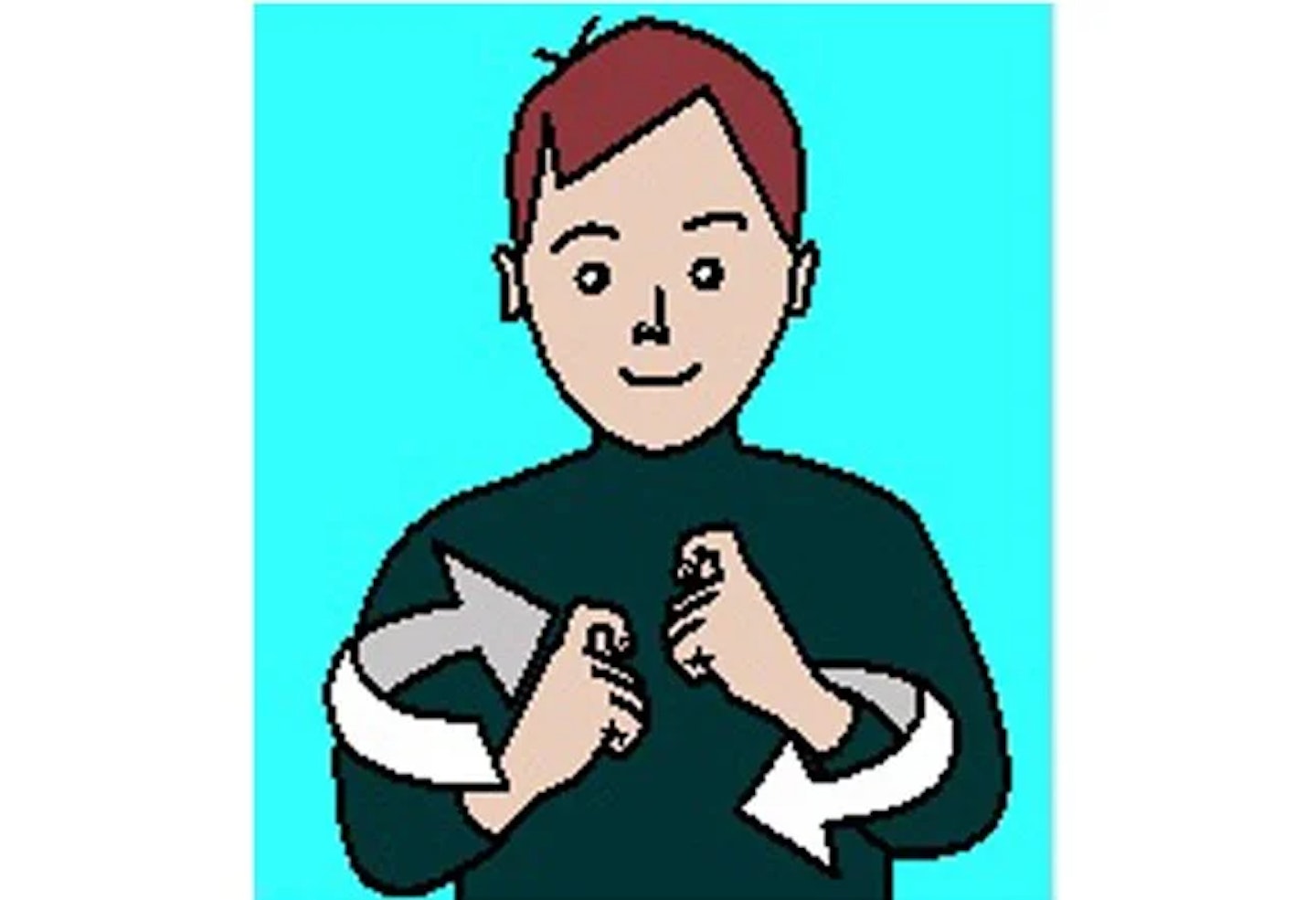
If your baby’s got a dirty nappy, they can let you know with this change sign. With both hands in a fist shape and your index fingers shaped like a hook, cross your wrists with your right wrist over your left. Then, switch your left hand with your right in a circle, clockwise motion.
The benefits of baby sign language
It boosts early communication skills
Babies naturally want to communicate – and baby signing is a brilliant way to help your little one to do so.
"As their fine motor skills develop earlier than their ability to speak, they will start to clap, wave and point from around six to eight months," says signing with babies and children teacher Katja O’Neill. "These natural gestures have been found to be a precursor for speech."
Signing can add to these simple gestures, helping babies learn an astonishing 30 to 60 simple signs before they reach their first birthday. But Katja stresses that signing shouldn’t be used as a substitute for speech and language – rather in addition to it.
"As you speak normally to your baby, you simply use a sign to emphasise the keyword we try to communicate, i.e. 'Do you want some milk'" explains Katja.
A good dose of self-esteem
With signing, your baby learns to communicate their needs and observations long before they can speak, so you can easily respond to them.
"Being able to communicate our needs and having them met is a huge part of our wellbeing and self-esteem," says Katja. "It also increases the self-esteem of the parent, because it’s wonderful to be able to know what your baby wants without playing the guessing game – which can make us feel inadequate sometimes!"
It reduces frustration
Various research has shown that signing may be able to help reduce the number of tantrums your child has when learning to speak.
"The ‘terrible twos’ peak at around 17 months, which is largely due to the discrepancy between your baby’s needs and wants, and their ability to make themself understood," explains Katja.

They’ll do better at school
Connecting the sound of a word to a visual sign can help a child get to grips with the word quicker. Teaching your baby signs also helps them get used to learning at a very young age.
"When we sign, we connect the spoken word to a visual sign, which helps your baby to remember and learn the word more quickly," Katja explains. "Children who sign have also been found to have a larger 'word bank' than non-signing children. The more words a child knows and uses by the age of five, the better they are thought to do academically, too."
You’ll bond with your baby even more
When you sign at the same time and learn baby signs together, it's a great way to boost interaction levels between you and your baby – and can help boost their overall development.
"When your baby’s attempts to sign are recognised and rewarded, they'll develop more," says Katja.
It’s great for multilingual families
Some parents have found that baby signing can be a great international communication tool for babies used to hearing more than one language.
"I’ve found that it helped in our bilingual family, as signing was a bridge between the two languages spoken in our home," says Katja.
It makes you more confident
Arguably one of the best benefits of baby signing is that it will make you feel like you’re doing a good job at parenting. Understanding what your baby wants will make you feel like you know your child better, consequently bringing you closer to each other.
Can baby sign language cause speech delay?
There have been lots of different discussions on whether signing speeds up a baby’s speech development and child communication with the learning of words and signs. And while no conclusion has been reached, baby signing hasn’t been found to harm a baby’s ability to talk.
"However, the undisputed fact is that your baby can learn to sign many words before they're able to speak, and it doesn’t hold back speech," says Katja.
Mum Jessica Brown and her 11-month-old daughter Alannah put baby signing to the test…
"Baby signing appealed to me as I heard it could help me communicate better with my daughter, Alannah, 11 months, and understand her needs more.
Research suggests babies as young as six months can share their basic needs through sign language, letting you know when they’re hungry, need a drink or want their favourite toy. Experts say it can stop babies from getting frustrated and help avoid tantrums.
I found a class near my home in Solihull, West Midlands, run by TinyTalk and booked two sessions. My husband was sceptical when I told him about babies using sign language, but I had an open mind.
We started the class with a welcome song, sitting on chairs in a circle, using signs to sing ‘hello’ and the first letter of each baby’s name. We then moved onto the floor to learn a collection of signs for the day’s theme, ‘In The Garden’. Quite a few babies recognised the hand gestures for bird, butterfly and caterpillar. I learned signs for garden, sunshine and hedgehog.
Next we got up on our feet to dance and sing along to I Went To School One Morning, finishing with every baby’s favourite, The Hokey Cokey, including the signs for arms, legs and shaking.
We then sat back on the floor as the teacher, Charlie, began reading from a book, making signs for each animal, the weather and different times of the day.
It was inspiring to see how engaged the babies were. Looking around the class it was inspiring to see how engaged the babies were, seemingly understanding some of the signs and smiling excitedly as their mums repeated them. Normally by this point in other classes, most children are more interested in pulling each other's shoes/socks off or crawling across the room after spotting something more fascinating.
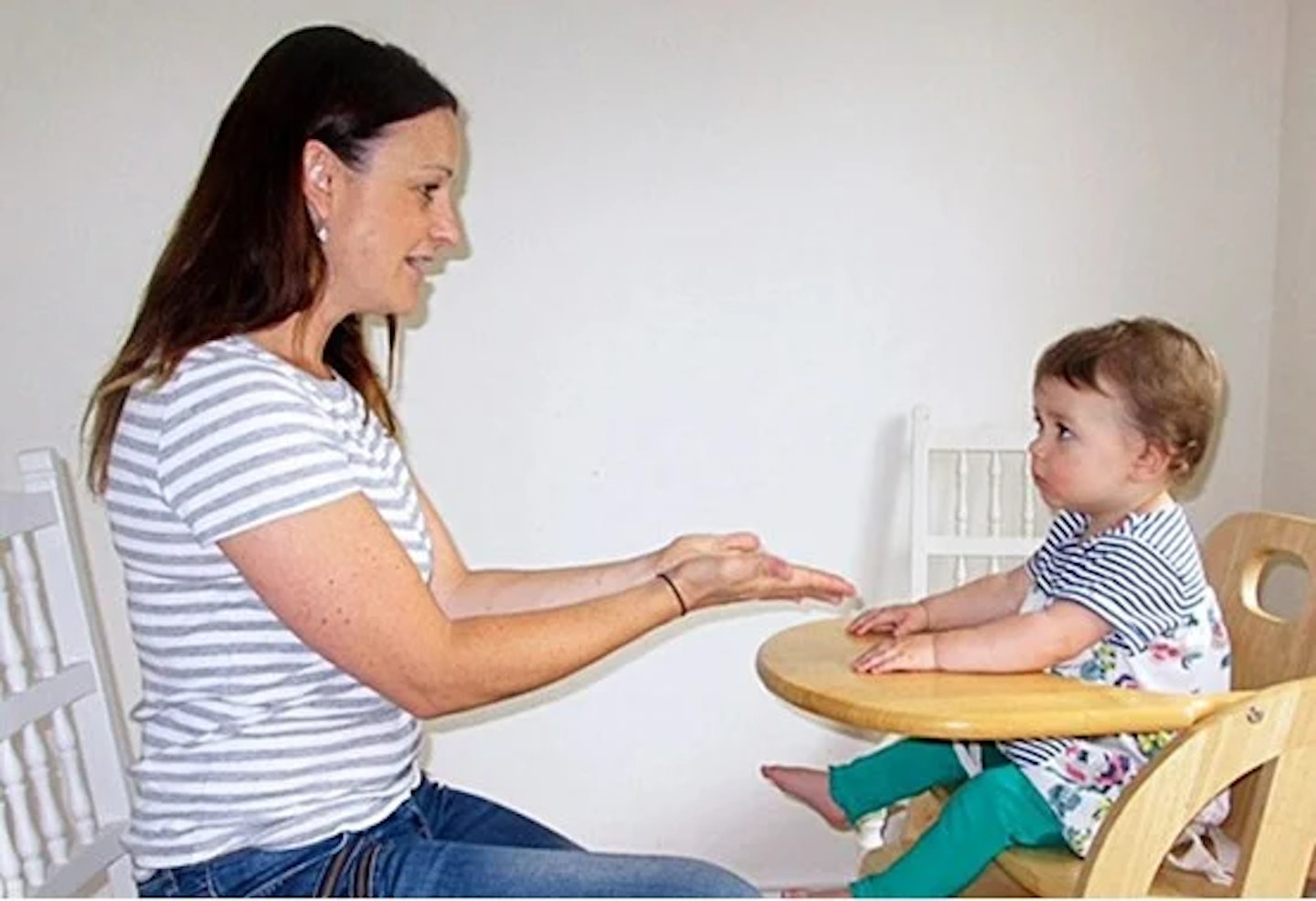
The lesson finished after 40 minutes and I was offered tea and cakes – always a bonus! The mums sat around chatting about the progress since last week, to a chorus of ‘well done’ and ‘how exciting’ as they proudly revealed what their children had signed for the first time. Some babies who’d been attending for months knew 15 to 20 signs. Newbies were just grasping the basic signs for milk, food and dog.
A mum whose son learned the sign for milk at 11 weeks old told me: ‘He totally understands what he’s asking for and uses it every day now.’ A mum with a 13-month-old said: ‘She knows 12 signs so far, the first she learned was for food, then more and all gone. Now she can tell me when she’s thirsty and in pain, usually pointing to where it hurts too.’ I found the more I encouraged her, the quicker she learned.
The teacher advised me to practise basic signs at home with Alannah, saying it may take a few weeks. I found the more I encouraged her, the quicker she learned, and she definitely enjoyed it. Most children start communicating with gestures and sounds between six and 18 months, so this is a great time to start signing. TinyTalk uses simplified signs suitable for babies based on British Sign Language, which are all universal.
The next week I went back for my second lesson and practised with Alannah a lot at home too. Since our second class, she’s learned the signs for all gone and where?. She also understands but hasn’t yet copied, the signs for food and hot. I’m more aware of things she’s trying to say and show me. Before the classes, I’d have probably overlooked this, so I feel I have a better understanding of her needs and can respond quicker.
Baby signing is a fun activity that also helps you communicate better with your baby. Just be prepared to spend time practising at home!"
About the expert
This article contains expert advice from Katja O’Neill. Katja has been teaching ‘Signing with babies and children’ to parents, nurseries and school settings for the past eight years throughout Hertfordshire and Bedfordshire. As a mother of three children, she can speak from her own experience, having seen first–hand the difference signing can make in the early years of an infant as well as when they start school. She shares her experience and research-based approach in private groups, seminars and ‘Sign and Sing’ classes with parents and Child Care professionals.
